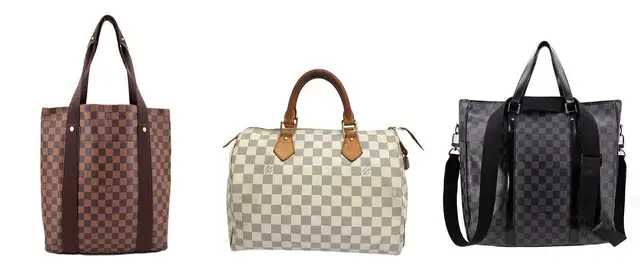A Comprehensive Guide to Understanding Where Fashion Brands Manufacture Their Products
Fashion brands have come a long way from their humble beginnings, with many now manufacturing and selling their products all over the world. But where exactly do fashion brands manufacture their products? The answer is a complex one, depending on the brand and the products in question.
Factors That Affect Where Fashion Brands Manufacture Their Products
There are a few factors that affect where fashion brands choose to manufacture their products. These factors include cost, quality, and labor laws. Cost is the primary factor for most fashion brands, as their profits depend on them keeping their production costs low. Quality is also a major factor, as fashion brands need to ensure that their products are made to a high standard. Labor laws are also important, as fashion brands need to adhere to the laws of the countries they are manufacturing in.
Common Manufacturing Locations for Fashion Brands
Fashion brands tend to manufacture their products in countries with low labor costs and favorable labor laws. Some of the most common manufacturing locations for fashion brands are China, India, Bangladesh, and Vietnam. These countries have the infrastructure and capacity to meet the demand of the fashion industry, and they also have favorable labor laws. Other popular manufacturing locations include Mexico, Indonesia, and Turkey.
Benefits of Manufacturing in Different Locations
Manufacturing in different countries can provide fashion brands with a number of benefits. By manufacturing in countries with lower labor costs, fashion brands can keep their production costs low, which allows them to remain competitive in the marketplace. By manufacturing in countries with favorable labor laws, fashion brands can ensure that their products are made to a high standard and adhere to the relevant labor laws.
Downsides of Manufacturing in Different Locations
There are also a few downsides to manufacturing in different countries. These include difficulties in communication and transportation, as well as potential delays in production. Additionally, some countries have poor labor laws, which can lead to lower quality products or unethical practices. It is important for fashion brands to research the countries they plan to manufacture in to ensure that their products are made to a high standard and adhere to the relevant labor laws.
The Pros and Cons of Different Manufacturing Locations for Fashion Brands
When it comes to fashion, the manufacturing process is just as important as the design. Where fashion brands choose to manufacture their products can be a major factor in their success or failure. Different manufacturing locations have their own unique advantages and disadvantages.
Pros of Manufacturing in Developed Countries
Manufacturing products in developed countries such as the United States, Japan, and Germany can offer several advantages. Quality control is often better in these countries, as the standards are higher and the workforce is more experienced. This allows fashion brands to ensure that their products are of the highest quality. Additionally, production costs can be lower in these countries as labor and materials are often cheaper.
Cons of Manufacturing in Developed Countries
However, there are also several drawbacks to manufacturing in developed countries. For one, production costs can be higher than in other countries, as labor and materials may be more expensive. Additionally, the turnaround time for orders can be longer due to stricter regulations, which can lead to delays in getting products to market. Finally, the distance from the target market can lead to higher shipping and transportation costs.
Pros of Manufacturing in Developing Countries
Manufacturing in developing countries can also offer advantages to fashion brands. Production costs are often lower in these countries due to cheaper labor and materials. Additionally, turnaround times can be shorter as regulations are often less stringent. This can allow fashion brands to get their products to market more quickly. Finally, the proximity to the target market can lead to lower shipping and transportation costs.
Cons of Manufacturing in Developing Countries
However, there are also some drawbacks to manufacturing in developing countries. Quality control can be more difficult to manage due to a lack of experience in the workforce. Additionally, the language barrier can make communication difficult, leading to potential misunderstandings. Finally, political instability in these countries can lead to unpredictable delays or even disruption of production.
Ultimately, the choice of where to manufacture a fashion brand's products depends on several factors. Companies must weigh the pros and cons of different manufacturing locations to find the best option for their needs.
Exploring the Global Supply Chain of the Fashion Industry: Where Do Brands Make Their Products?
As the fashion industry continues to grow, so too does the need for efficient global supply chains. Fashion brands are increasingly relying on complex networks of suppliers and subcontractors to meet their production needs. While the vast majority of fashion brands source their materials and labor from countries all over the world, they must be aware of the different laws and regulations that apply to them in each country. For example, a fashion brand must comply with labor laws, environmental regulations, and other legal requirements in each country in which they operate.
The global supply chain of the fashion industry is highly complex and constantly evolving. Fashion brands must be agile and responsive to changing consumer demands and trends, which can require them to adjust their production processes and sourcing strategies on a regular basis. This can include shifting production from one country to another or even completely changing the type of products they produce. As a result, fashion brands must be aware of the social, economic, and political factors that affect the global supply chain, including labor costs, exchange rates, tariffs, and other trade restrictions.
When it comes to the actual production of fashion items, the global supply chain of the fashion industry is made up of a variety of suppliers, subcontractors, and other vendors. Fashion brands typically source the raw materials and components that make up their products from a variety of different countries. This includes fabric, thread, dyes, leather, and other materials. The labor to assemble these materials into finished products is often sourced from countries with lower labor costs. Sometimes, fashion brands will even set up their own production facilities in countries with low labor costs.
It is important for fashion brands to be aware of the social, economic, and political factors that shape the global supply chain of the fashion industry. By understanding where their materials and labor are sourced from, fashion brands can ensure that they are compliant with local laws and regulations and that they are providing ethical and safe working conditions for their workers. Fashion brands must also be aware of the environmental impact of their production processes, and ensure that they are reducing their carbon footprint while still meeting consumer demands.



